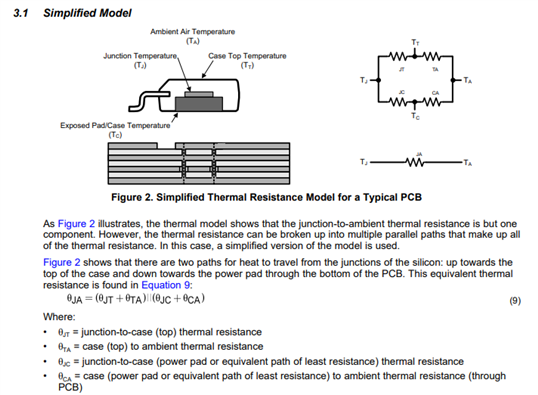The language in the (E2E thread) thread below appears vague, and as it stands I would not feel comfortable stating that I now know enough about the 5962R0722701VZA part to start a thermal analysis that incorporates a thermal path between the part and PCB where it is installed.
There are a lot of assumptions that both the user and the TI tech are making, that may or may not be true of the 5962R0722701VZA part.
To assume the Junction-Board thermal resistance is the same as the Junction-Case thermal resistance, is impossible without test data or very detailed knowledge of the part's construction (i.e., perhaps the part's construction is highly symmetrical and the part leads do not participate as a significant thermal path??? I honestly have no idea, but perhaps TI does...).
Which leads to my question for TI, and I apologize for all the references that make this question look messy, but I mean to be very specific:
Is the Junction-Board thermal resistance the same as the Junction-Case (Top) thermal resistance (11.2 C/W per datasheet SNAS411P –AUGUST 2008–REVISED APRIL 2017, Sheet 6, Section 6.4) for the 5962R0722701VZA part (TI PN: ADC128S102WGRQV, 16-lead ceramic SOIC)?
Thanks,
Tim



